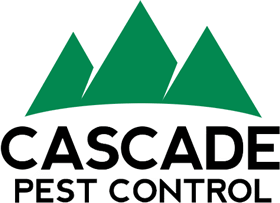Facts About Pantry Moths (Indian Meal Moths)
Facts about Pantry Moths (Indian Meal Moths), how to avoid infestation, and pantry moth treatment preparations instructions.
The pantry moth, or Indian Meal Moth (Plodia interpunctella) looks similar to the clothes moth – pale in color with a 5/8” wing span. Their varying wing colors, however, distinguishes them from the clothes moth. Pantry moths have a copper reddish brown coloring on their outer wings with a darker brown/black band separating the upper and lower sections of the wing.

As the name implies, the pantry moth feeds on items that would be stored in one’s kitchen pantry, such as grains, flour, spices, rice, dry mixes, bread, pasta, cereal, and more. Keep in mind, this pest will also feed on dry pet food!
Larvae will resemble a waxworm measuring 1/2” long, with brown heads, and will be pale pink, green, or yellow in color. They are typically very active and move quickly because of 3 sets of legs near the head and five sets of legs extending from the abdomen.
Often a pantry moth infestation will start with a trip to the grocery store and are typically brought into your house – hiding in the tiniest cracks and crevices – from food packages, canned goods, and other food containers (like spice jars).
Avoid Pantry Moth Infestation by:
- Inspecting the food packaging in the store BEFORE you bring groceries home
- Once home, wipe down all jars, cans, and packaging with soapy water
- Regularly clean food pantry area – be sure to get into all cracks and crevices. And if using the vacuum, change the bag or canister outdoors
- Replace old shelf paper – and/or wipe it down with a bleach solution
- Store pantry foods in air-tight, tightly-sealed containers
PANTRY MOTH TREATMENT PREPARATIONS INSTRUCTIONS
The preparations below are required prior to your technician’s arrival; If prep is not completed it may result in a service fee and rescheduling of the initial treatment
- Clear Cupboards & Cabinets
- Empty pantry and spice cupboards. If you find infested products, discard them.
- Check unopened packages. This may require opening the package often the original infestation was already present when an item was purchased. Moths and beetles can chew into packaging.
- The items that you keep can be placed on or under kitchen and dining room tables. Though the treatment is made to cracks and crevices we may also treat baseboards and upper corners. As an extra precaution you may want to cover the items on the tables and under with a sheet.
- Many of the cabinets and cupboards may contain nonfood items like pots, pans, and kitchen linens or the universal “junk drawer”. These should also be considered and at minimum close inspection particularly to the very backs of or hard-to-reach spots. Often the source of infestation is found in these areas.
- If you have space between the top of your upper cabinets and the ceiling, check that area for forgotten items.
- Decorations that are made from food items, like cookie ornaments, popcorn strings, noodle art and so on. Though not made for human consumption they are still food grade products and susceptible to infestation.
- Counter tops need to remain clear, we will need access to the cracks and crevices around them.
- Due to the lifecycle of these pests, it is important that we do a subsequent/follow up service. This appointment was likely scheduled at the same time as the first service. If not it is a good idea to schedule that service while we are here for the first service.
- The follow-up service requires the same preparation as above.
Questions? Call 888-989-8979 for immediate service!
